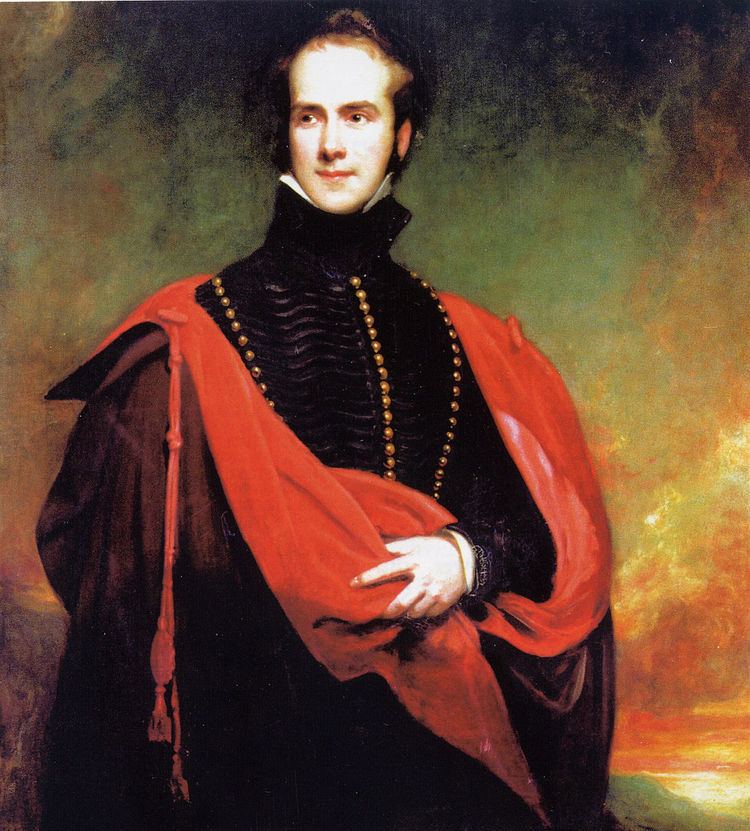Monarch Victoria Name Richard 2nd Prime Minister Lord John Russell Role Politician | Preceded by The Earl Fortescue Spouse Elizabeth Gower (m. 1819) Nationality English Political party Whigs | |
 | ||
Resting place St Mary's Church, Eccleston, Cheshire53°09′27″N 2°52′46″W / 53.1576°N 2.8794°W / 53.1576; -2.8794 Children EleanorMary FrancesGilbertElizabethHugh LupusEvelynCaroline AmeliaOctaviaAgnesGilbert NormanJane Louisa OctaviaRichardTheodora Grosvenor Parents Robert Grosvenor, 1st Marquess of Westminster Succeeded by James Graham, 4th Duke of Montrose Education | ||
Richard Grosvenor, 2nd Marquess of Westminster (27 January 1795 – 31 October 1869), styled The Honourable Richard Grosvenor from 1795 to 1802, Viscount Belgrave from 1802 to 1831 and Earl Grosvenor from 1831 to 1845, was an English politician, landowner, property developer and benefactor.
Contents
- Background and education
- Political and public life
- Development of the estate
- Personality and personal interests
- Family
- Memorials
- Styles of address
- References

Background and education
Grosvenor was born at Millbank House, Westminster, London, the eldest of the three sons of Robert Grosvenor, 1st Marquess of Westminster and Lady Eleanor Egerton. He was educated at Westminster School and Christ Church, Oxford where he graduated MA. He undertook the Grand Tour in 1815.
Political and public life
In 1818 Grosvenor was elected as Whig MP for Chester and was later appointed as a Justice of the Peace. In 1830 he was elected MP for Cheshire until the constituency was divided in 1832, and from then until 1834 he represented South Cheshire. He was Lord Lieutenant of Cheshire from 1845 to 1867 and Lord Steward of the Household between 1850 and 1852 in the Whig administration headed by Lord John Russell. On 22 March 1850 he was admitted to the Privy Council. He was presented with the Order of the Garter on 6 July 1857. Of his political activity it is said that "he seldom spoke in the House of Lords".
Development of the estate
Grosvenor "devoted himself ... to the improvement of his London property", and added to his properties in Dorset and Cheshire; he was described as being a "model landlord". Eaton Hall, Cheshire, had been rebuilt in flamboyant Gothic style for his father by William Porden. Grosvenor commissioned the Scottish architect William Burn to make alterations to it, including raising the centre of the south front to make it look like a tower. Burn also designed Fonthill House, Wiltshire, for him in Scottish Baronial style. On his estates Grosvenor built farms, schools and "numerous" cottages. Among his schools were the Bishopsfield Schools in Hoole, Chester.
Personality and personal interests
Grosvenor continued the family interest in horse racing and, when he was living in the country estate, he spent time hunting and fishing. He gave generously to charity, and built and restored churches. He was an early patron of the Chester architect John Douglas. In 1865–66 Douglas designed St John's Church for him in his estate village of Aldford. About the same time, Grosvenor gave fields in Chester to the city council for the formation of Grosvenor Park. For this park Douglas designed a number of items, including the Entrance Lodge, the gates, and a cover for Billy Hobby's Well. In 1865 the citizens of Chester began to raise money for the erection of a statue "to mark the public and private worth of his lordship, and the high estimation in which he is held by his neighbours and tenants, as well as by all classes of the community". Over £5,000 (equivalent to £430,000 as of 2015) was raised. The statue showing the marquess in his garter robes was designed by Thomas Thornycroft, and erected in 1869; it still stands in Grosvenor Park.
Grosvenor's parents had instilled "high moral principles" in their children, and these stayed with Richard throughout his life. He has been described as "of austere character and unswerving devotion to duty as family man, politician and landlord". His obituary in The Times says "he administered his vast estate with a combination of intelligence and generosity not often witnessed".
Family
Lord Westminster married Lady Elizabeth Leveson-Gower, younger daughter of George Leveson-Gower, 2nd Marquess of Stafford (later 1st Duke of Sutherland), in 1819. Following their marriage, Westminster and his wife initially lived at Eaton Hall, Cheshire, the family's country house, with Lord and Lady Grosvenor. During the London season, from April each year, the family lived in Grosvenor House. In 1827 the couple visited Norway, Sweden and Russia and in 1835–36 they toured through Germany and Italy. In 1883 they moved into Motcombe House, Dorset, in one of the family's estates. When the 1st Marquess died in 1845 they followed the family tradition of using Eaton Hall as their country house and Grosvenor House as their London residence, where they entertained lavishly.
Lord Westminster and his wife had thirteen children, ten of whom survived into adulthood and three of whom lived into their nineties. Their second son Hugh Lupus Grosvenor succeeded him as 3rd Marquess; he was later created Duke of Westminster. Their youngest son Lord Richard Grosvenor was ennobled as Baron Stalbridge.
Lord Westminster died at Fonthill House, Fonthill Gifford in Wiltshire on 31 October 1869 after a short illness and was buried in the family vault in St Mary's Church, Eccleston, Cheshire. His wealth at death is recorded as being under £800,000 (equivalent to £66,650,000 as of 2015).
Memorials
Westminster Memorial Hospital, Shaftesbury, Dorset, was founded in Grosvenor's memory in 1871.
